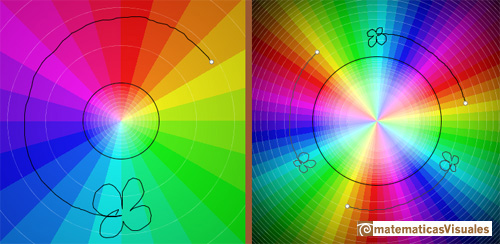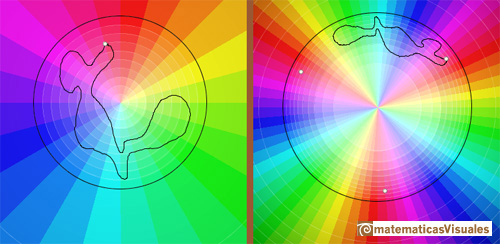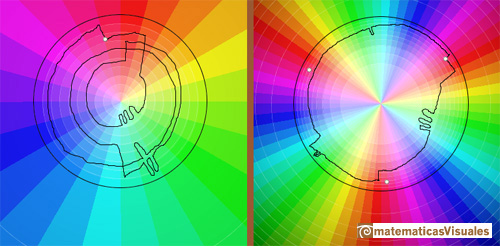
The usual definition of a function is restrictive. We may broaden the definition of a function to allow f(z) to have many differente values for a single value of z. In this case f is called a "many-valued function" or a multifunction.
For example, we know that

has three different values (if z is not zero), so it is a three-valued multifunction.
In this case, we see that each color is shown three times and that each z value has three different images with the same module but different argument.

If we arbitrarily choose one of the three images of a given point z and gradually moves away from this initial position then the image moves away in a completely determined way -its distance from the origin is the cube root of the distance of z, and its angular speed is one third that of z. (Needham, p.91)
As z travels along a closed loop like in this picture, its image f(z) travels along a closed loop and returns to its original value.

However, if z instead travels along a closed loop which goes round the origin once, then f(z) does not return to its original value but instead ends up at a different cube root. Note that the detailed shape of the loop is irrelevant, all that matters is that it encircles the origin once. (Needham, p.91)

Similarly, if z travels along a closed loop encircling the origin twice, then f(z) ends up at the third and final cube root. (Needham, p.91)

Clearly, if z travels along a loop that encircled the origin three times, then f(z) returns to its original root. (Needham, p.91)

The point z = 0 is called a branch point of the multifunction f(z).
REFERENCES
 NEXT
NEXT
 PREVIOUS
PREVIOUS
MORE LINKS




























